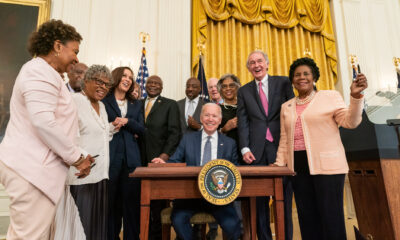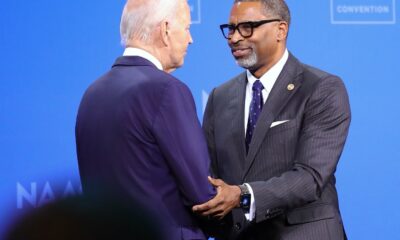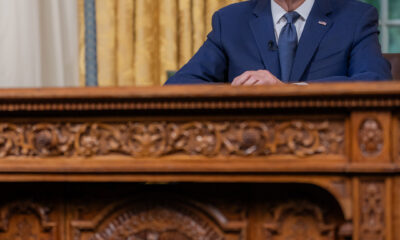Featured
The Misconceptions of Voting

For a number of young African-American voters, the 2012 Presidential Election will be the first time they have the opportunity to vote. While there seems to be excitement and hype about the voting process in communities nationwide, there is also some confusion about what is required for voters.
Since 2010, 42 states have introduced legislation that would require photo ID at the polls, but only 8 states have passed the law. The Center for Information and Research on Civic Learning Engagement (CIRCLE) released the findings of their most recent polls about race, ethnicity and political views. They found that young voters seemed to be confused about the voting rules in their area:
40% of young people were “unsure” about each of the voting rules (ID, early voting and registration deadline).
Young African-American voters are more likely to think they need to show ID compared other ethnic groups.
“It’s hard to tell how well people are informed,” said Kei Kawashima-Ginsberg, the lead researcher at CIRCLE. “From our polls we know that people are confused.”
Kawashima-Ginsberg also said most young voters assume the voting process is going to be complicated and restrictive; they sometimes hear that their state is going to make the voting process challenging and don’t take further steps to obtain more details.
Voter ID Laws and Voter Suppression
CIRCLE is a non-partisan group, but Kawashima-Ginsberg said voter requirements could affect voter turnout. Additionally, the Black Youth Vote Project at the University of Chicago released a report, which stated African-American voters are susceptible to voter suppression because many of us don’t have a photo ID.
“If you read between the lines African-Americans come to the polls, they don’t vote by mail,” said Kawashima-Ginsberg. “Voter ID laws could stop them from coming to the polls in a large number and suppress the liberal group.”
Furthermore, a number of people were confused about the kind of photo ID that was required to vote. Some people assumed they must have a driver’s license to vote instead of another form of photo ID. However, CIRCLE’s polls did show that most people have at least one form of ID:
Hispanic Voters were less likely to have either a driver’s license or state photo ID (the two most common forms of ID). Only 82.3% of Hispanics were likely to have a photo ID.
93% of blacks had at least one form of ID and 96.1% of whites had at least one form of ID.
64.4% of young African-Americans who thought they had to show an ID said they were likely to vote compared to 70% of blacks who were likely to vote if they did not have to show an ID.
African-American Voter Turnout is High
While there are numerous misconceptions regarding voting rules, Kawashima- Ginsberg said African-Americans lead other groups in terms of their likeliness vote at the polls this Tuesday. CIRCLE conducted polls in mid-October and gathered the following information:
60.6% of black young people said they were likely to vote (compared to 51.0 % in June/ July polls) compared to 55.2% of whites (up from 49.5% in summer). Additionally, 48.4% of Hispanics were likely to vote compared to 39.4% in June/July.
Sources:
The Black Youth Vote Project at the University of Chicago – http://research.blackyouthproject.com/
Kei Kawashima-Ginsberg, Lead Researcher at CIRCLE

-

 Featured10 months ago
Featured10 months agoCalifornia Is the First State to Create A Public Alert for Missing Black Youth
-

 Featured10 months ago
Featured10 months agoAfrican American Leaders Stay the Course Amid Calls for President Biden To Bow Out of Race
-

 Featured10 months ago
Featured10 months agoThe Debate Fallout Lands on Both Candidates
-

 Featured9 months ago
Featured9 months agoPresident Joe Biden Decides to Withdraw from the Presidential Race
-

 Featured10 months ago
Featured10 months agoPresident Joe Biden Describes Shooting of Donald Trump As ‘Sick’
-

 Featured9 months ago
Featured9 months agoIn One of His Final Speeches as President, Biden Says It’s Time for ‘Fresh Voices’

